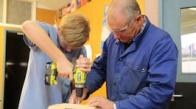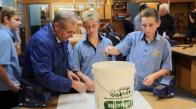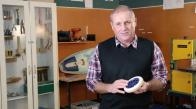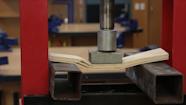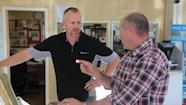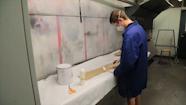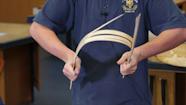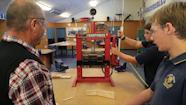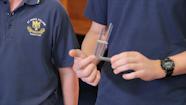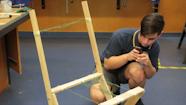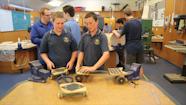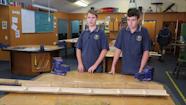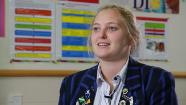At Diocesan School planning focuses on technology components for years 7–10, and establishing scholarship potential in year 13.
Reviewing programme planning in years 7–13
Transcript
Claire Wood: We looked at the indicators of progression and then we worked out what we were actually covering in our units of work, and so we looked at the different levels, the different contexts and the components. And so then we had a matrix that showed the coverage that we were doing, and then we could see what we weren’t doing. And so what we could concentrate on.
And we also looked at what we could track, because we do a semester system, we could actually look at, say for example, we were looking at brief development at year seven, when they did a semester of food, we could actually pick it up again when they did the second semester of product design, we could look at their learning and what had happened between when they had first looked at brief development to when they did it again. And so we can track, we can track one component with each level.
Each year I have to write an annual report and the annual report has all of the results from all of the assessment criteria from year seven through to year 10 and I have to analyse those and it’s also got the NCEA results from year 11 to 13 so I analyse those as well but with the junior high area we can look at a particular component. So for example, brief development.
So we can have a look and just sort of see how each teacher is going and so we can get our common, the common thinking around the grades more sort of ironed out and so I need, I might see a real need to work on a particular component because we haven’t quite got the grades in our heads yet. And so that gives me something to work on and we can also see the component that is tracked, we can see how that’s going as well.
So I use that data when I’ve analysed it to actually bring it into a faculty meeting to discuss. When we looked at the components of our matrix we did realise that tech systems was one that we were really not covering at all and so that is something that I need to do a little bit of research on with the faculty so that we can include it in our matrix. And it may not be in all three contexts, it might just be in one context, but that is something that we are going to look at next.
Well we’ve started developing a matrix for year 11, 12, and 13 because I think it’s really important that across those three levels that the students cover all the components to great depth, so that when they come to do scholarship, they’ve actually got knowledge in all three strands and so they can produce that evidence for their scholarship report.
Abby Dingle: My scholarship classes at the moment, when I’m getting them in at year 13, right at the beginning the second that I’m giving them a context I’m making sure that my context is broad enough to give them enough scope to be able to have a scholarship project. I think that the two things that I’ve been focusing on this year is making sure that the complexity is authentic. Scholarship projects have to be real, have to be relatable, so their stakeholders absolutely must have a definite issue that they’re looking to resolve. I am trying to get them to relate that issue to a wider world as well. To a wider concept, so even current problems in society that they can then balance with each other.
Related videos
Combining knowledge and practice (01:58)
Steve Andrew explains how understanding materials is essential for effective technological practice.
Linking hands-on experiences and understandings (03:54)
Hands-on experiences allow the students to see materials understandings in action.
Play, experiment, explore (02:55)
Steve Andrew lets the students see, feel, and play with products to develop their understandings in materials.
Finding materials to meet the specs (02:36)
Steve Andrew shares how students identify material specifications in a brief and then test materials to find those that are suitable....
School–industry relationship cuts both ways (03:36)
Steve Andrew and Terry Rillstone describe the way the relationship between St John's College and The Shop has benefits for them both....
Pushing the boundaries with materials (02:53)
Steve Andrew describes how his senior students have the confidence to select and work with unfamiliar materials.
Exploring unfamiliar materials (02:44)
Year 12 students from St John's College describe what they know about bamboo and how they are applying this knowledge to their projects....
Students and teachers talk about testing materials in year 11.
Manipulating, forming, and transforming
Students in year 10 describe manipulating, forming, and transforming materials.
Evaluating materials for an outcome
Steve Andrew and students talk about using their knowledge to test materials for their projects at year 12.
Year 10 students describe some of the attributes for the snake skates they are developing.
Senior students select their own issues
Year 12 students talk about the issues that they have selected for their projects.
My context and issue (04:57)
Year 13 students share about the contexts and issues they have chosen in their food technology programme.
A year 13 student talks about her career pathways (00:55)
A student shares about combining her interests in law and food technology.

